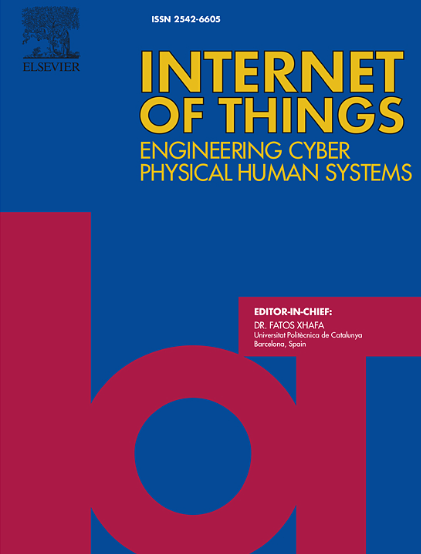增强IIoT网络的IEEE 1588 PTP安全性:一个轻量级的攻击检测和缓解框架
IF 7.6
3区 计算机科学
Q1 COMPUTER SCIENCE, INFORMATION SYSTEMS
引用次数: 0
摘要
高精度时钟同步是工业物联网(IIoT)网络的一个重要方面,因为工业物联网中节点之间的时钟不同步会降低系统性能甚至导致系统故障。在这种对时间敏感的网络中,IEEE 1588精确时间协议(PTP)被广泛使用。资源效率和安全性已成为设计工业物联网应用的PTP时最重要的问题。PTP提供了统一和高精度的时间,而目前的形式是资源低效和不安全的,特别是对于资源受限的物联网设备,如电池供电的传感节点。为此,本文旨在改进现有的PTP,以提高工业物联网网络的安全性,而不涉及复杂和功耗的加密算法。我们研究和分析了可能影响PTP网络安全性和同步性的潜在网络攻击。考虑到IEEE 1588在其附录K中定义的PTP安全性的局限性,我们提出了对PTP算法的安全扩展。该安全模型覆盖了整个PTP攻击面,能够及时检测所有PTP节点上的攻击。在进行攻击检测的同时,建立了攻击缓解模型,以减轻攻击对主PTP节点的影响。在不同的网络条件和不同的重要参数下,对所提出的安全点对点模型进行了评估。观察到,新引入的函数不会损害同步精度。所有的实验评估表明,该方法对网络攻击具有更高的安全性和鲁棒性,并且在所有考虑的网络配置中都不会影响PTP设备的运行。本文章由计算机程序翻译,如有差异,请以英文原文为准。
Enhancing IEEE 1588 PTP security for IIoT networks: A lightweight attack detection and mitigation framework
Highly precise clock synchronization is an important aspect of the Industrial Internet of Things (IIoT) network because desynchronized clocks among nodes in IIoT can degrade system performance and even lead to system failure. IEEE 1588 Precision Time Protocol (PTP) is widely used in such time-sensitive networks. Resource efficiency and security have become the most important concerns in designing PTP for IIoT applications. PTP provides unified and high-precision time, whereas it is resource inefficient and insecure in its current form, particularly for resource-constrained IoT devices, such as battery powered sensing nodes. To this end, this paper aims to advance the existing PTP to improve security for IIoT networks without involving complex and power-consuming cryptographic algorithms. We study and analyze the potential cyber-attacks that can affect the security and synchronization of the PTP network. Considering the limitations of the PTP security defined by IEEE 1588 in its Annex K, we propose a security extension to the PTP algorithm. This security model covers the full PTP attack surface and allows the detection of attacks on all the PTP nodes in a timely manner. Along with the attack detection, we establish an attack mitigation model to mitigate the attack effects on Master PTP nodes. The proposed secure PTP model was evaluated under different network conditions and with varying important parameters. It was observed that newly introduced functions do not compromise synchronization accuracy. All the experimental evaluations demonstrate that the proposed approach is more secure and robust to cyber-attacks and does not affect the operation of PTP devices in all considered network configurations.
求助全文
通过发布文献求助,成功后即可免费获取论文全文。
去求助
来源期刊

Internet of Things
Multiple-
CiteScore
3.60
自引率
5.10%
发文量
115
审稿时长
37 days
期刊介绍:
Internet of Things; Engineering Cyber Physical Human Systems is a comprehensive journal encouraging cross collaboration between researchers, engineers and practitioners in the field of IoT & Cyber Physical Human Systems. The journal offers a unique platform to exchange scientific information on the entire breadth of technology, science, and societal applications of the IoT.
The journal will place a high priority on timely publication, and provide a home for high quality.
Furthermore, IOT is interested in publishing topical Special Issues on any aspect of IOT.
 求助内容:
求助内容: 应助结果提醒方式:
应助结果提醒方式:


